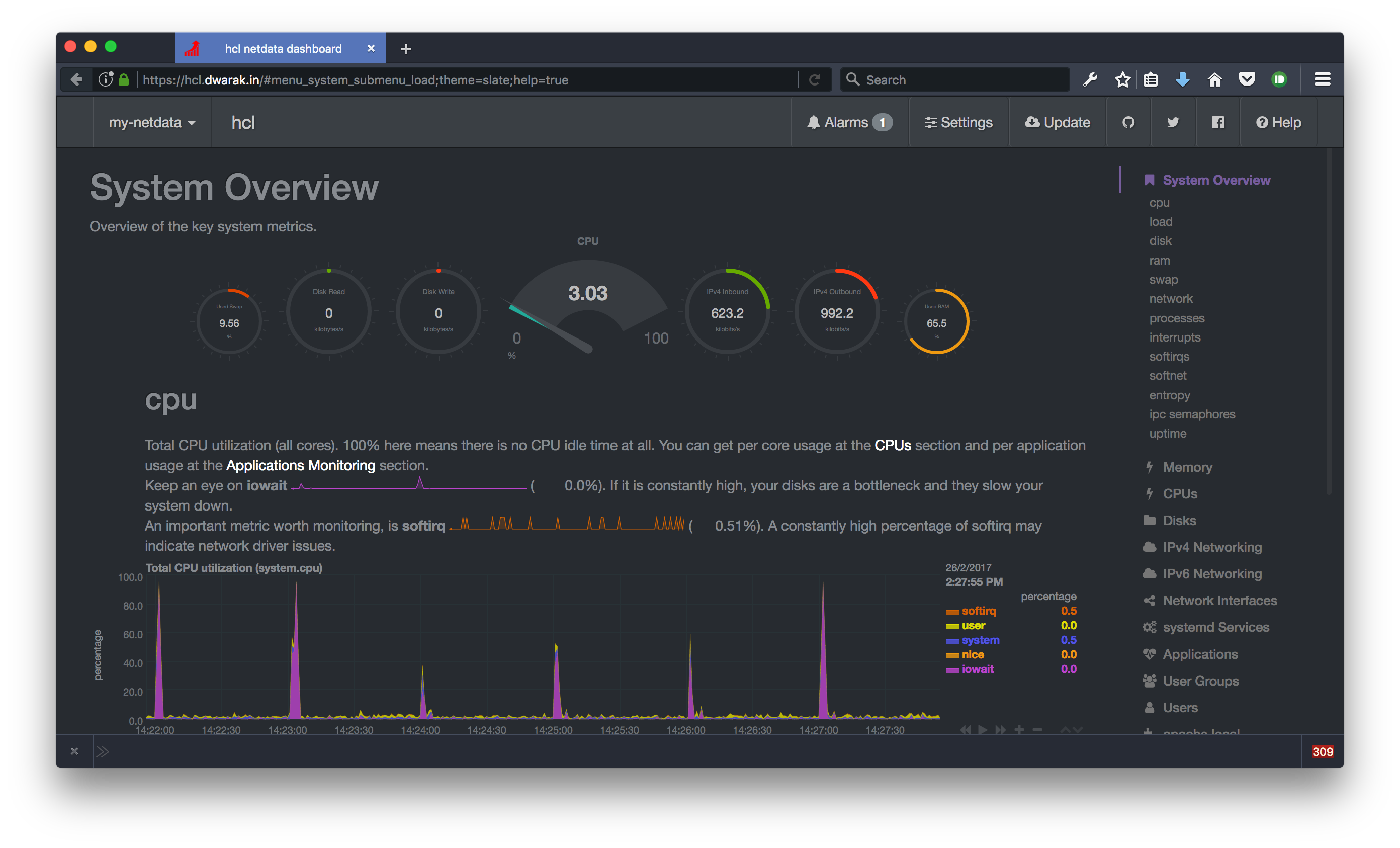Stuff to do with your own server
Feb 26, 2017
#setup, #own, #server
These days, we find a lot of computing devices unused - at home and at office. There are so many of them around, you can practically run all of your day-to-day web based services by yourself. All you need is a bunch of old CPUs (even one would do to get started) and a decent internet connection. It is fun and a super exhilarating experience to run and manage your own server! This becomes all the more relevant when you care about your data privacy.
Here is a sample of what you can do with it and along the way I would also show you what I did with my old HCL laptop that was lying dormant for more than a couple of years. The same can be replicated with a Raspberry Pi too.
Run Linux
Operating System is a purely individual choice. Personally, I’d prefer a headless debian based distro - for its ease of use and package availability. Before you start setting up, I’d strongly encourage you run a BIOS memory check and a disk check. We don’t know how these devices would perform under load and ensuring hardware health is a good option. Replace components if necessary - better than getting a new device altogether. Also consider a battery check if you run a laptop.
Essentials
A list of essentials (or rather what I did) that your server has to run.
My laptop’s RAM got damaged last summer and I couldn’t get a compatible replacement anywhere. So, of the 4 GB RAM the OEM had sold it with, only 2 GB is functional now. There isn’t much scope to run memory-heavy applications, but the following definitely holds good. The peak average memory load comes close to 70%.
- Samba Shares - to share files within devices on your network. Follow my post here to create samba share on your server.
- Nextcloud/Owncloud - your personal Dropbox.
- Secure your server with LetsEncrypt. Make sure you setup a cron to auto renew every 3 months. (Details included in the blog post link.)
- Plex Media server - your home Media Center.
Monitoring
One thing that is an absolute necessity is a monitoring stack. When you run things yourself, remember - anything can go wrong anywhere. Tracing your errors and monitoring your device’s health is paramount. net-data is an excellent choice. But, if you’d like to have an option, you can consider linux-dash too.
Here’s the monitoring dashboard for my laptop.

Optional Stuff
Few things I’d like to have. Few of them hosted locally. And a few hosted in my remote droplet.
- Syncthing - [LOCAL]
- PXE Server - [LOCAL]
Cryptocurrency mining- Too expensive.- Audio FM streaming with Arduino interface - [LOCAL]
- Private blog - wordpress, ghost et.al. (Jekyll may be a good option too)
- Mumble Server. (Communications) Riot Server if you want better options.
- Openshift Origin/Dokku server - If you’re setting up a Dev Desktop.
- XMPP Server
OpenVPN Server- Try AlgoVPN.- Turtl Notes
- Kubernetes cluster
- Mastadon server - if you are really into social networking.
- Self hosted git repositories - gitea or gitolite or Gitlab.
- Orchestrate all of the services via Caddy Webserver.
- Flickr alternatives - MediaGoblin, Piwigo, Perkeep etc
Domain DNS hosting
You may not want to expose your media server and your private blogs to public internet. But, for pretty much anything else you will have to do it - for daily usage. Almost every router today comes with the ability to port forward.
If you have a static IP address, you are all set. With port forwarding setup, you can go ahead and access your services.
If you want to mask it behind a domain name, you can get a domain for cheap rates at CrazyDomains.in. But again, that’s a personal choice.
Dynamic DNS with Cloudflare
If you don’t have a static IP though, you need to get a domain.
To host DNS, I’d strongly suggest Cloudflare. It is very developer friendly and provides free SSL certificates. You can use Cloudflare’s API to update your DNS periodically too.
Here’s the script to do that. You may edit this to your need.
Create a cron job to update it periodically. I’ve set up to do that every 3 minutes. It updates my NextCloud server and Laptop’s monitoring stack DNS. Cloudflare’s API limit is 1200 calls for 5 minutes.
More inspiration
If you have the power and urge to do more with your server(s), here are some inspirations.
Let me know what you’ve done with yours!